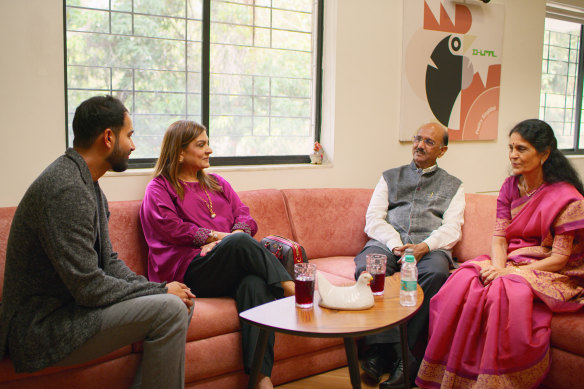Many years ago while working in the drab North London offices of a (funnily enough) wedding website, I arranged my first couple. Well when I say arranged, I mean set-up. Over a number of chats, a colleague and I realised that our single best friends would be great together. As it turned out, we were wrong.
Our friends went on a few dates but when my colleague’s friend decided that my friend was not someone he wanted to see on a regular basis I was left to deal with the aftermath. And the aftermath involved me somehow getting the blame for the relationship failing.

It’s not easy to get it right with couples, as Indian Matchmaking shows.Credit: Netflix
I learned a number of lessons over that period, the main one being that setting people up is a minefield.
It takes a special person to want to act as a modern-day Cupid. You need to be well-connected, you need to have a thick skin, you have to be able to not roll your eyes far back into your head when someone offloads their wish list of what they’re looking for in a partner. He has to be wealthy, have a six-pack and be a brain surgeon? Hmm, let me see what I can do about that.
But the idea of a modern-day matchmaker intrigued me, and many years later I embarked on writing my book The Matchmaker about such a person. Saima, arranges marriages for the desi community in Sydney but despite wanting to remain resolutely single, she ends up finding love herself.
Through the book I wanted to not only turn around many of the misconceptions about arranged marriages in the West, I also wanted to dissect some of the cultural practices and biases that occur within my community – and do it all in a light and funny way.
While I was writing my novel, the show Indian Matchmaking started on Netflix and immediately had an impact. Sima Taparia, the matchmaker at the centre of the show, was bringing the concept of arranged marriages to a worldwide audience, however the show only had people from a certain Indian background. These participants wanted to be matched along the lines of like-for-like. This meant that people from a certain Hindu caste wanted to be matched with others of the same caste, people from a certain Indian background wanted people from a similar background. This as expected attracted criticism.
“It represents only one kind of people,” Shailaja Bajpayee, editorial adviser to The Print told BBC.com. “They are all rich, upper-caste and fair-skinned people. There are no lower castes or religious minorities, except for one Sikh, and I can’t remember seeing anyone who has darker skin colour.”
A few years ago someone in my family came out of a seven-year relationship and decided they wanted to settle down, so they turned to their family to help them find a partner.
For all the latest Life Style News Click Here
For the latest news and updates, follow us on Google News.
